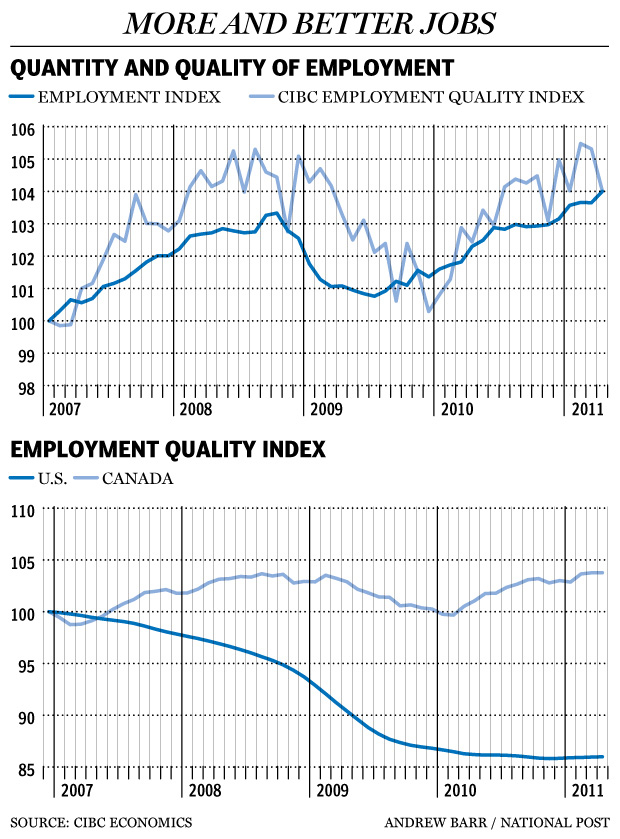The unemployment rate in Canada stood at 7.6% in April compared to 9.0% in the U.S. According to Bureau of Labor Statistics, 244,000 jobs were created in April. But how many high-paying, full-time jobs created in the U.S.?.
Recently McDonald’s hired 62,000 people in the U.S.after receiving more than a million applications. These jobs will be counted technically as jobs created but these jobs do not pay a “living wage” let alone high wages.
From a Bloomberg news report last month:
McDonald’s Corp. (MCD), the world’s biggest restaurant chain, said it hired 24 percent more people than planned during an employment event this month.
McDonald’s and its franchisees hired 62,000 people in the U.S. after receiving more than one million applications, the Oak Brook, Illinois-based company said today in an e-mailed statement. Previously, it said it planned to hire 50,000.
The April 19 national hiring day was the company’s first, said Danya Proud, a McDonald’s spokeswoman. She declined to disclose how many of the jobs were full- versus part-time. McDonald’s employed 400,000 workers worldwide at company-owned stores at the end of 2010, according to a company filing.
Meanwhile in Canada high-paying, full-time jobs are being created according to a report by CIBC Economics released yesterday. From “Not only more jobs, better jobs in Canada“:
ed by an increase in high-paying, full-time jobs, the quality of employment in Canada is roughly back to pre-recession levels, according to a report from CIBC Economics released Monday.
The study found that along with the 283,000 jobs created over the 12 months ending April 2011, the bank’s employment quality index also enjoyed a 2.7% lift.
A key factor in this improvement – according to CIBC World Markets deputy chief economist Benjamin Tal, the report’s author – was growth in full-time jobs, which increased by close to 2%, more than double the growth in part-time employment. Furthermore, of those full-time jobs, the number of high-paying positions increased almost three times faster than low-paying employment.The quality of employment indicator is significant, according to the report, because it suggests on average that every job now created generates more buying power than a year ago. This boosts spending power and gives the Bank of Canada something to consider in making a decision on interest rates.
The above chart shows the high divergence in employment quality index between U.S. and Canada. CIBC measures employment quality index using factors like full-time versus part-time employment, self-employment versus paid, and the compensation ranking of full-time paid jobs in more than 100 industry groups.




